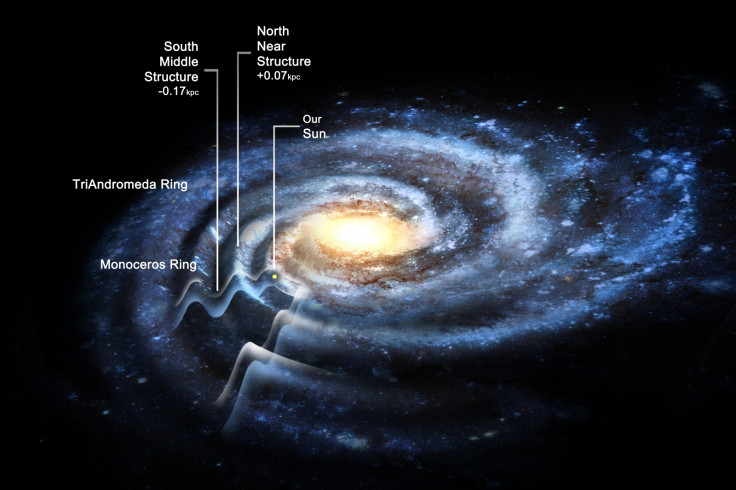Milky Way is 50% bigger than we thought

The Milky Way is 50% bigger than we thought it was – measuring 150,000 light years across rather than 100,000, scientists have said.
Using old astronomical data from Sloan Digital Sky Survey, scientists have also worked out our galaxy is wavy, with several concentric ripples.
The researchers, from the Rensselaer Polytechnic Institute, say the findings show that features once identified as rings are actually part of the galactic disk.
Study leader Heidi Jo Newberg said: "In essence, what we found is that the disk of the Milky Way isn't just a disk of stars in a flat plane - it's corrugated. As it radiates outward from the sun, we see at least four ripples in the disk of the Milky Way. While we can only look at part of the galaxy with this data, we assume that this pattern is going to be found throughout the disk."
The Sky Survey spent eight years studying one significant section of the Milky Way. Newberg noticed a dense clump of stars on the outer edge that was raised up above the galactic plane in 2002 – the Monoceros Ring.
Her research showed an 'over-density' of stars at the outer edges of the galaxy, but not enough data had been collected to investigate.
Yan Xu, a scientist at the National Astronomical Observatories of China, added: "Going into the research, astronomers had observed that the number of Milky Way stars diminishes rapidly about 50,000 light years from the centre of the galaxy, and then a ring of stars appears at about 60,000 light years from the centre.
"What we see now is that this apparent ring is actually a ripple in the disk. And it may well be that there are more ripples further out which we have not yet seen."
Newberg said the finding supports the idea that the ripples could be caused by dark matter or a dwarf galaxy passing through the Milky Way. She also notes it could be used to measure how lumpy dark matter is in our galaxy.
"It's very similar to what would happen if you throw a pebble into still water - the waves will radiate out from the point of impact," she said.
"If a dwarf galaxy goes through the disk, it would gravitationally pull the disk up as it comes in, and pull the disk down as it goes through, and this will set up a wave pattern that propagates outward. If you view this in the context of other research that's emerged in the past two to three years, you start to see a picture is forming."
© Copyright IBTimes 2025. All rights reserved.






















